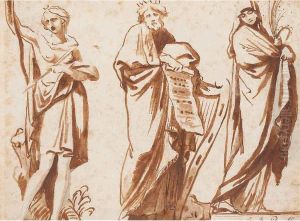Jean-Baptiste Pigalle Paintings
Jean-Baptiste Pigalle was a prominent French sculptor who played a significant role in the development of 18th-century French art. Born on January 26, 1714, in Paris, France, Pigalle emerged from a family with modest means. His passion for sculpture was evident early on, and he began his artistic training under renowned sculptors such as Robert Le Lorrain and Jean-Baptiste Lemoyne. Pigalle's talent and dedication to his craft soon earned him recognition, and by the 1730s, he was already making a name for himself in the competitive Parisian art scene.
Pigalle's style was characterized by its blend of classical tradition and emerging rococo influences, which allowed him to create works that were both elegant and expressive. One of his earliest major commissions was the statue of Mercury, which he executed in lead for the Gardens of Versailles. This work showcased his ability to infuse classical forms with a sense of movement and vitality, traits that would become hallmarks of his style.
In 1744, Pigalle's career took a significant step forward when he won the prestigious Prix de Rome, a scholarship that allowed him to study in Rome. His time in Italy had a profound impact on his artistic development, exposing him to the masterpieces of ancient and Renaissance art. Upon his return to France, Pigalle continued to receive important commissions, including monuments and statues for the French royalty and nobility.
One of Pigalle's most famous works is the tomb of Marshal Maurice de Saxe in Strasbourg, a monumental masterpiece that is considered one of the finest examples of French funerary art. The tomb is notable for its dramatic composition and the emotional intensity of its figures, reflecting Pigalle's mastery in combining realism with theatricality.
Throughout his career, Pigalle was also known for his portraits and busts, which captured the personality and essence of his subjects with remarkable sensitivity and detail. His sculptures of Voltaire and Denis Diderot are particularly celebrated for their lifelike realism and psychological depth.
Jean-Baptiste Pigalle's contributions to French sculpture were widely recognized in his time, and he was admitted to the French Academy in 1744. He continued to work and influence the art world until his death on August 20, 1785, in Paris. Today, Pigalle's works are celebrated for their technical brilliance and emotional power, securing his place as one of the leading figures of 18th-century French sculpture.
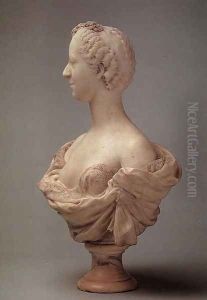
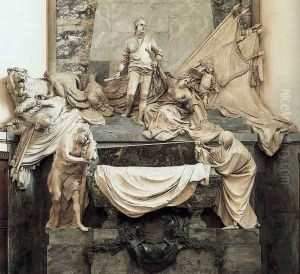
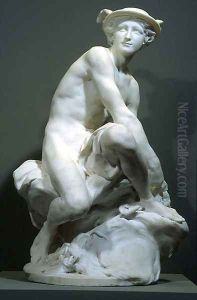
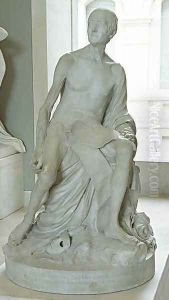
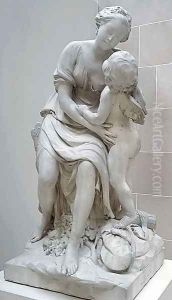
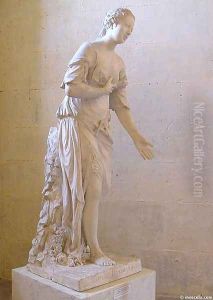
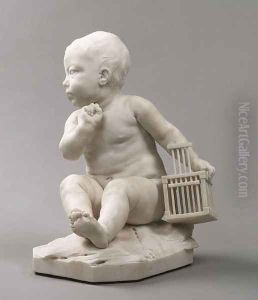
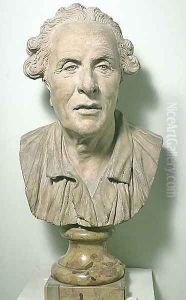
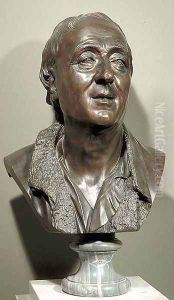
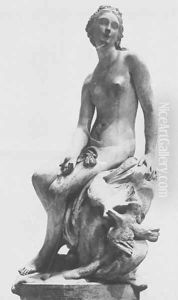
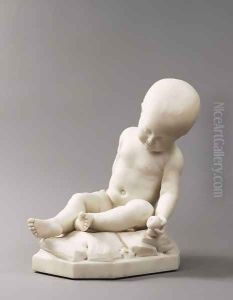
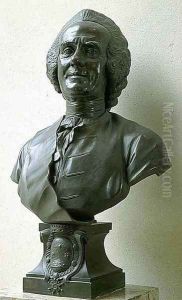
![Portrait of Pierre-Louis-Marie Maloit [1730-1810]](https://www.niceartgallery.com/imgs/249536/s/jeanbaptiste-pigalle-portrait-of-pierrelouismarie-maloit-17301810-70df01e7.jpg)

